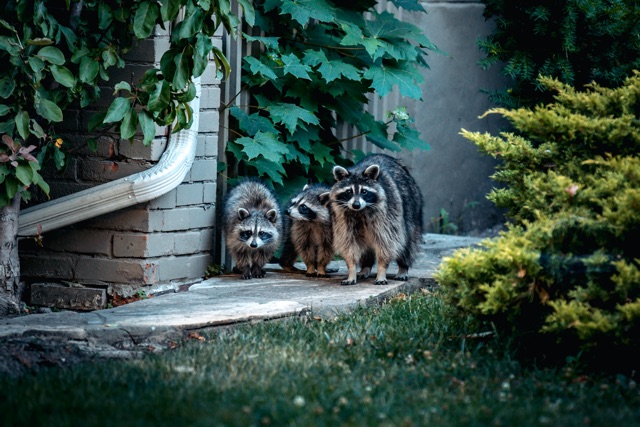
Even though your house is a haven of warmth and safety, curious animals like raccoons might decide to take refuge there. Proactive actions are necessary to protect your home from raccoon attic incursions. In this thorough guide, we’ll look at practical advice for homeowners on how to protect their homes from raccoon intrusions while promoting wildlife cohabitation and maintaining the sacredness of your house.
Secure Trash Cans: Taking Out Temptations
Because they are opportunistic foragers, raccoons may find nearby trash cans to be seductive. Garbage cans should be secured with tight-fitting lids and latches to make it difficult for raccoons to access possible food sources. For added protection against these intrepid creatures, think about keeping trash in a secured shed or garage until pickup day.
Reduce Branches Close to the House to Prevent Raccoon Access
Because they are adept climbers, raccoons can enter your home through overhanging trees. To stop raccoons from scaling rooftops or entering attic vents, trim nearby tree branches while keeping a safe distance.
Strengthen Attic Vents: Resilient Barriers
When raccoons are looking for shelter, vents could be a possible entrance. Install hardware cloth or mesh over attic vents to create a strong barrier against raccoon entry and to ensure that your property is properly ventilated.
Seal Cracks and Gaps to Prevent Entry
Check the outside of your home carefully for any openings that raccoons could use to get inside. Caulk, steel mesh, or hardware cloth are strong materials that can be used to close off these gaps, blocking any potential access locations for these agile critters.
Using chimney caps as fortresses to guard chimneys
If left unattended, chimneys could develop into raccoon havens. To stop raccoons from using this vertical entrance to enter your home, install a chimney cover, a fortified barrier.
Remove Yard Waste for a Clear Canvas
A messy yard may serve as a welcome mat for raccoons looking for shelter. Keep your yard neat by clearing away any debris, fallen leaves, and other potential hiding places for raccoons.
Utilize Motion-Activated Lighting to Avoid Unwanted Spotlight
Because raccoons are nocturnal animals, well-lit places can discourage them from engaging in nocturnal activity. Install motion-activated lighting throughout your house to make their nocturnal antics well-lit.
Use Natural Repellents as Deterrents
Utilize the force of nature by placing natural repellents close to probable entry sites, such as pepper spray or rags soaked in ammonia. These smells are repulsive to raccoons but act as deterrents without harming the animals.
Strengthen Sheds and Garages: Fortified Retreats
Raccoons looking for shelter may find garages and sheds to be alluring. Make sure these constructions are safe by installing strong locks and sealing the entrances to stop raccoons from building nests.
Using pet food with caution and avoiding allure
Raccoons may be attracted by pet food left outside. Avoid leaving pet food or water dishes outside all night by feeding them indoors.
By taking these preventative steps, homeowners can make their homes uninhabitable for raccoons and protect their residences from attic incursions. Adopting preventive measures, securing weak points, and using organic deterrents will not only safeguard your home and property but also promote peaceful coexistence with wildlife. Remember, a few easy precautions can go a long way in preventing raccoons from entering your home, protecting its integrity while honoring these cunning animals’ basic inclinations.
